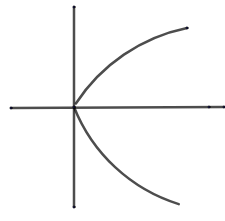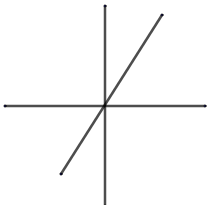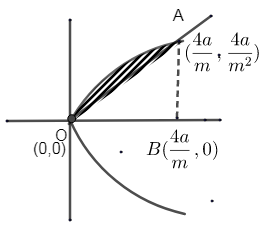Question
Question: Using integration, find the area enclosed by the parabola \[{{y}^{2}}=4ax\] and the chord y = mx....
Using integration, find the area enclosed by the parabola y2=4ax and the chord y = mx.
Solution
- Hint: First, from the given expression / conditions, find the 2 curves which we need to find the area. Next by using elimination method find the points of intersection of the curves. By looking at their equations, use normal co – ordinate geometry knowledge to find their shapes. Draw the curves together on a graph. By using their diagrams mark the area which is common in both of them. Now, integrate the curves to find the areas and subtract the extra area to get the area which is common to both curves.
Complete step-by-step solution -
Elimination method:
First write 2 curve equations which you need to solve to find intersection points. Then try to convert one variable in terms of another variable by using any one of the equations. Now substitute this variable in terms of others into the remaining equation. Now the remaining equation turns into an equation of one variable.
By normal geometry find the variable. Using previous relations, find the other variable. Thus, you get the intersection point(s).
Chord of a parabola: - The line segments whose endpoints always lie on the parabola is known as a chord. Here it is given y = mx. So, the line passes through origin.
As we know by definition the other end must lie on parabola.
Given expressions in the question are written as: -
\Rightarrow $$$${{y}^{2}}=4ax - (1)
⇒y=mx - (2)
By basic knowledge of geometry we can say y2=4ax is a parabola sideward with vertex at origin (0, 0) and we can also say y = mx is a straight line through origin.
By substituting equation (2) in equation (1), we get an equation:
⇒(mx)2=4ax
By subtracting 4ax on both sides, we get:
⇒m2x2−4ax=0
By taking m2,x2 common from equation, we get:
⇒m2x(x−m24a)=0
Now we take an valid assumption which is m2=0 because as the line is chord it must cut parabola at some other point, but if m = 0 it is cutting parabola only at origin.
So, m=0 by this we can say m2=0.
So, by dividing with m2 on both sides, we get:
⇒x(x−m24a)=0
So, roots of above equation, x = 0, x = m24a.
By substituting these values into equation (2), we get:
If x = 0, y = m (0) = 0 ⇒ y = 0.
If x = m24a, y=m(m24a)=m4a⇒y=m4a.
So, the intersection points are (0, 0) (m24a,m4a).
Curves: -
y2=4ax

y = mx

Combining: -

The required area is the difference between the areas of parabola and the straight line from O to A.
So, we will find the both areas separately in the following cases as shown.
Case 1: Area of parabola from O to A. Let it be P.
Area of a curve f (x) as x varies from x1 to x2 is given by
⇒A=x1∫x2f(x)dx
Parabola is given as: y2=4ax
By applying square root on both sides, we get:
⇒y=4ax=f(x)
We know, x1 = 0 as origin (0, 0), x2=m24a as A (m24a,m4a).
So, the area of parabola, P can be written as:
P=0∫m24a4axdx
By basic integration we know that, ∫kx=k23x23+C.
By using this we can write, P in terms of “a” as:
⇒P=4ax23×320m24a
By substituting limits, we get “P” as:
⇒P=4a(m24a)23×32=m316a2×32=3m332a2
Case 2: Area of straight line from O to A. Let it be Q.
Area of curve f (c) as x varies from x1 to x2 is given by
⇒A=x1∫x2f(x)dx
Straight line: - y = mx = f (x). We know x1 = 0 as (0, 0) x2=m24a as A (m24a,m4a).
By substituting these Q can be written as:
⇒Q=0∫m24amxdx
We know, ∫xdx=2x2+C
By using above we can write the Q as:
⇒Q=[m2x2]0m24a
By substituting limits, we get Q in terms of a as:
⇒Q=m(m24a)221−0
Finally we can write Q in terms of a, m as:
⇒Q=m38a2
Required area is the difference between these 2 areas. So, we can write it as follows:
Required area = P – Q
By substituting P, Q values, we get area as:
Required area =3m332a2−m38a2
By taking LCM we can write it as: - Area = 3m38a2
Therefore the area bounded between given curves is 3m38a2 square units.
Note: The idea of proving m=0 is very cervical because if m = 0 the area bounded can be said to be infinite or zero. Be careful while calculating P. Do not forget the term 32, generally students forget to write it. Instead of integration as you know x, y coordinate intersection you can write it as base and height respectively. Use area of triangle for straight lines area calculation.
